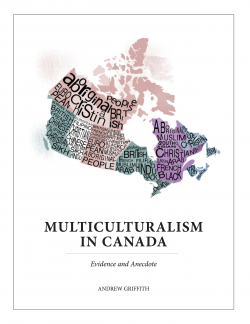Education and earnings of Canadian-born Black populations
2023/09/06 Leave a comment
Striking the differences between Canadian-born and African and to a lesser extent Caribbean born groups, along with the education differences. Helps explain part of the higher prevalence of Blacks in administrative positions compared to professional positions.
This study uses the 2021 Census to describe the educational attainment and earnings of the Canadian-born Black population, focusing on three groups: 1) those with at least one African-born parent (African-origin); 2) those with at least one Caribbean-born parent (Caribbean-origin) and 3) those whose parents were both born in Canada (Canadian-origin). Comparisons are drawn with the non-racialized, non-Indigenous population, both second generation and third generation or more. The study provides a descriptive analysis of the demographic and educational characteristics of the three Canadian-born Black populations, followed by a regression analysis examining factors affecting earnings, including educational attainment, job characteristics, and other factors.
- The educational attainment of Canadian-born Black populations differs considerably between groups. For example, the share with a bachelor’s degree or higher is 46% among the African-origin Black population, 27% among the Caribbean-origin Black population, and 16% among the Canadian-origin Black population.
- After taking age into account, all groups of Black men earn less than non-racialized third-generation or more men, with the largest earnings gap among Canadian-origin Black men (-$16,300) and the smallest among African-origin Black men (-$8,500). Canadian-origin (-$9,500) and Caribbean-origin (-$1,300) Black women likewise earn less than non-racialized third-generation or more women, while African-origin Black women earn more (+$3,100).
- For both women and men, differences in educational attainment are associated with approximately $8,000 in earnings difference between the African-origin and Canadian-origin Black populations, after controlling for other factors.
- Differences in educational attainment are associated with higher earnings among African-origin Black women (+$4,500) and men (+3,500), who have high educational attainment, and lower earnings among Canadian-origin Black women (-$3,800) and men (-$4,500), who have low educational attainment, relative to non-racialized third-generation or more populations of the same genders. Earnings differences related to educational attainment are smaller for Caribbean-origin Black women (+1,200) and men (-$400), whose educational attainment is more similar to that of the non-racialized third-generation or more population.
- Despite their diversity in terms of educational attainment and other characteristics, all Black groups experienced earnings gaps (ranging from $1,400 to $4,100) associated with working in lower-level occupations relative to their education and being less likely to have full time full year work, compared to the non-racialized third-generation or more population. Among African-origin men and Caribbean-origin women, the negative wage effect from these differences was larger than the positive effect from higher educational attainment.
- All Black groups also had earnings gaps (ranging from $2,900 to $8,300) that were not explained by any factors associated in the regression. Differences in pay between Black and non-racialized workers in the same occupations may be one factor in these differences. The unexplained effects were larger for Black men than Black women, across all three Black groups.
Source: Education and earnings of Canadian-born Black populations

